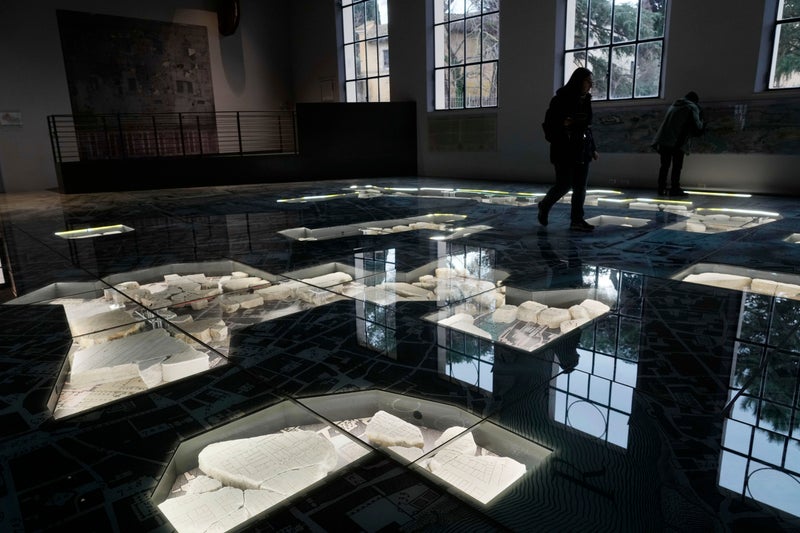ARCHAEOLOGISTS have uncovered a 2000-year-old city lying beneath an office basement. The bombshell discovery has been pinned as one of the most important parts of Roman history. Sitting under a basement in London was a large ancient public building, also known as a basilica. This 2,000-year-old venue, located under 85 Gracechurch Street, would have been where political leaders made decisions affecting Roman London and beyond.
![[2000-year-old stone wall unearthed beneath an office basement.]](https://www.thesun.co.uk/wp-content/uploads/2025/02/bombshell-discovery-archaeologists-uncover-2000-971647147.jpg?strip=all&w=960)
It served a the commercial and social hub for citizens of Londinium and was uncovered in October 2023 by Museum of London Archaeology (MOLA). The Director of Development at MOLA Sophie Jackson said: "This is one of the most significant discoveries made in the City in recent years. "It's like discovering the Speaker’s Chair and chamber of the House of Commons, 2,000 years into the future. "Excitingly, we’ve only just scratched the surface of this site’s potential through our initial investigations.".
![[Close-up of a 2000-year-old brick with markings.]](https://www.thesun.co.uk/wp-content/uploads/2025/02/bombshell-discovery-archaeologists-uncover-2000-971647264.jpg?strip=all&w=960)
Archaeologists were able to pin down the location previously but they were not aware if any of the basilica had survived. Officials dug small test pits to check what was concealed under the basement and on the third try, digging between filing cabinets, they came across the hidden city. When uncovering the hidden city, MOLA found huge foundations, flint walls and Roman tiles. Some areas were over 10m long, 1m wide and 4m deep.
![[Illustration of London's first basilica and forum, including an archaeologist examining the site, a map of London highlighting the location, and a 3D model showing its relation to modern buildings.]](https://www.thesun.co.uk/wp-content/uploads/2025/02/ac-13_02-basilica-map.jpg?strip=all&w=684)
These features of the basilica are a piece of a larger site that spans an area roughly the size of a football pitch. When is was used it was likely to have been two floors tall with an open courtyard for locals and visitors. The ancient site is now set to open to the public and will be the first display of London’s first Roman Basilica. For those who really want to experience what it was like living in ancient London, you'll be able to walk right through the historic venue.
![[Archaeologist examining a 2000-year-old stone wall.]](https://www.thesun.co.uk/wp-content/uploads/2025/02/bombshell-discovery-archaeologists-uncover-2000-971646991.jpg?strip=all&w=960)
Surviving parts of the site will turn into an exhibition offering event space and an immersive experience. Proposals will start this month and if approved further excavations will take place. This should unveil more of the ancient structure including the construction details and the building's interior. It certainly won't be a quick process however and MOLA hopes the exhibition will be ready for public viewing from 2029.
Historic England Chief Executive Duncan Wilson said: “To find the dais of the Basilica, the heart of London’s Roman Forum, surviving beneath today’s bustling square mile is really something special. "To capitalise on this extraordinary discovery we have helped shape a new public display of the archaeological remains, offering a brand new visitor experience in the City.". MOLA revealed the basilica's history.





























